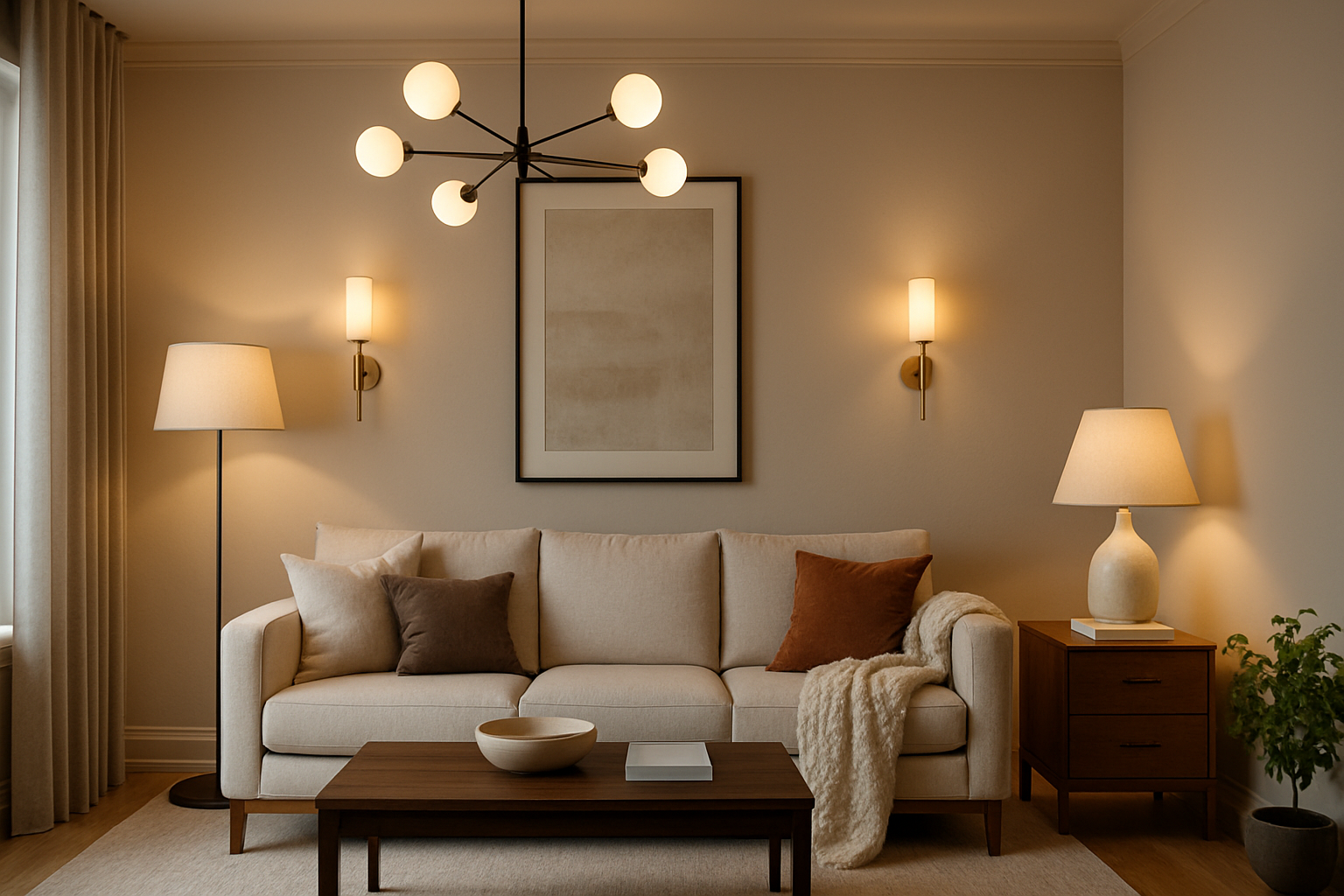Lighting is one of the most powerful yet underestimated elements of home decor. The right lighting doesn’t just illuminate a room — it creates mood, highlights features, and adds depth and dimension. With thoughtful choices, you can make a space feel cozy, elegant, or energizing, simply by adjusting the way it’s lit.
Aqui está um guia completo para usar a iluminação como ferramenta de decoração.
Understand the Three Layers of Lighting
Every well-designed room uses a mix of three lighting types:
- Ambient lighting: The main source of light (ceiling fixtures, chandeliers, recessed lights).
- Task lighting: Focused lights for specific activities (desk lamps, reading sconces, under-cabinet lighting).
- Accent lighting: Decorative lights that highlight features (spotlights, wall washers, LED strips).
Balancing these layers ensures your space is both functional and stylish.
Choose the Right Bulbs
Bulbs affect both the atmosphere and functionality of a room.
- Warm light (2700K–3000K): Creates a cozy, relaxing feel — great for bedrooms and living rooms.
- Cool light (3500K–4100K): Brighter and energizing — ideal for kitchens and bathrooms.
- Daylight bulbs (5000K+): Crisp, white light — best for offices or task-oriented spaces.
Don’t underestimate the impact of color temperature on mood.
Use Statement Fixtures
Light fixtures can double as design elements.
- Chandeliers: Add drama and elegance to dining or living rooms.
- Pendant lights: Perfect for kitchens, above islands, or dining tables.
- Floor lamps: Offer flexibility and sculptural appeal.
- Wall sconces: Save space while adding ambiance.
Think of fixtures as decor — not just functional items.
Play with Dimmers
Dimmers give you control over atmosphere.
- Lower the lights for intimate dinners or relaxation.
- Increase brightness for cleaning or working.
- Use smart dimmers to adjust lighting by voice or app.
One simple dimmer switch can transform how a room feels.
Highlight Architectural Features
Lighting can showcase your home’s best features.
- Use recessed spotlights to wash walls with light.
- Add LED strips under shelves or cabinets.
- Illuminate artwork with picture lights.
- Place floor uplights behind plants for dramatic shadows.
Accent lighting draws attention where you want it.
Create Zones with Lighting
Open-plan homes benefit from lighting that separates spaces.
- Use pendants over the dining table to define the eating area.
- Add floor lamps by the sofa to create a reading corner.
- Place under-cabinet lighting in the kitchen for work zones.
Different lights signal different purposes without needing walls.
Mix Styles for Character
Don’t be afraid to mix lighting styles.
- A modern chandelier with vintage sconces adds personality.
- Combine metal finishes like brass, black, or chrome.
- Use fabric shades alongside bare-bulb industrial designs.
Mixing creates layers of character and avoids a “too perfect” showroom look.
Don’t Forget Natural Light
Artificial lighting is essential, but natural light is irreplaceable.
- Use sheer curtains to diffuse sunlight without blocking it.
- Place mirrors opposite windows to maximize brightness.
- Keep windows uncluttered to let light flood in.
Natural and artificial light together create the perfect balance.
Final Thoughts: Design with Light in Mind
Lighting isn’t just about seeing clearly — it’s about creating an experience. By layering ambient, task, and accent lights, choosing the right fixtures, and embracing natural light, you can design spaces that feel inviting, stylish, and perfectly suited to your lifestyle.
When you think of decor, don’t stop at furniture and color — remember that light is what brings your home to life.
